How to use Pinterest to drive high-volume traffic on auto-pilot
Though Pinterest is mostly ignored by SEOs and content marketers, contributor Jessica Foster recommends using it for traffic and content promotion before your competitors find out and get in on the action.
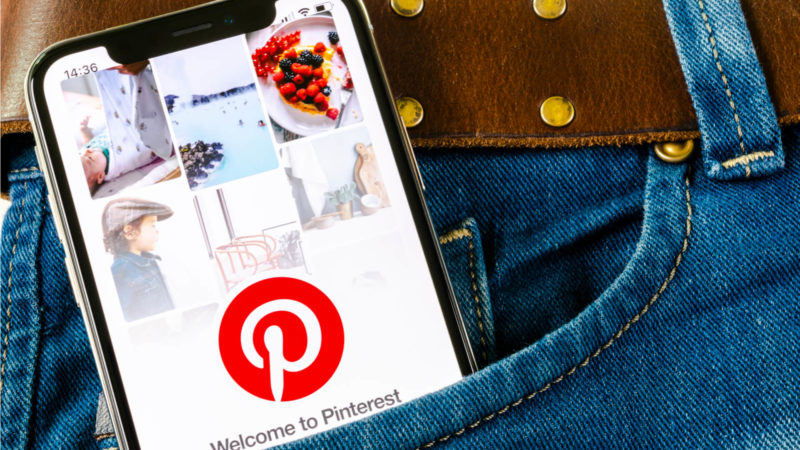
“Isn’t Pinterest just for bloggers?”
I hear this question all the time when I mention Pinterest marketing, typically from digital marketers, search engine optimization (SEO) experts and your typical horde of haters.
And my usual response is usually along the lines of…
“Maybe. So?”
After all, nearly every website out there has a blog in some form or another, and putting out consistent content is often the cornerstone of a lot of businesses SEO strategies. If Pinterest really is “just” for bloggers, and nearly every business has a blog, why wouldn’t they want a piece of that Pinterest pie?
Pinterest as a content marketing tool
Having digitally “grown up” in the blogging community, I saw firsthand the success bloggers achieved through Pinterest marketing.
It is a hot topic in Facebook groups and forums when it comes to running a successful blog. Pinterest often ties (and even surpasses) SEO as one of the leading sources of traffic for bloggers.
So how big is Pinterest? Let’s look at the numbers.
According to Pinterest, in 2017 there were 175 million active Pinterest users around the world and 75 billion ideas “pinned.”
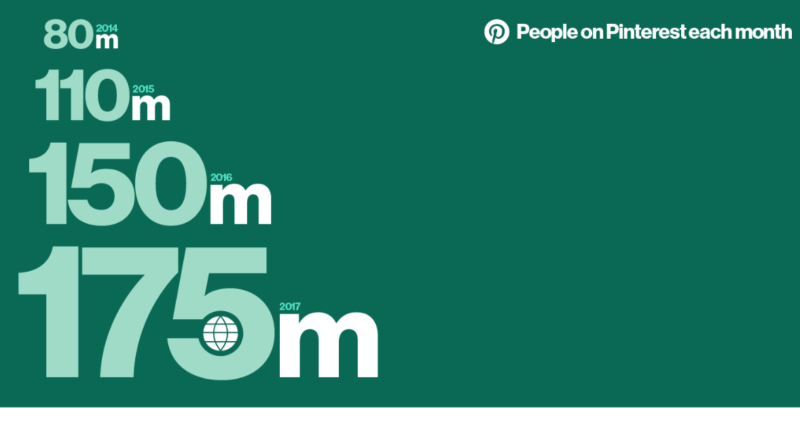
Ninety-three percent of Pinners (i.e., Pinterest users) use Pinterest to decide what to buy online, and 67 percent have said they discovered new products because of what they’ve seen on Pinterest.
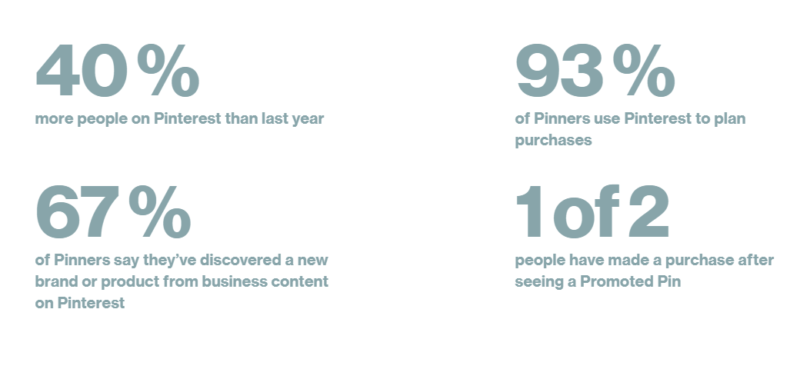
Over 14 million articles are pinned each day, and 80 percent of Pinners use the Pinterest mobile app to find what they’re looking for.
Pinterest has an undeniable amount influence, particularly when it comes to female users — though about 50 percent of new Pinterest sign-ups were men in 2017.
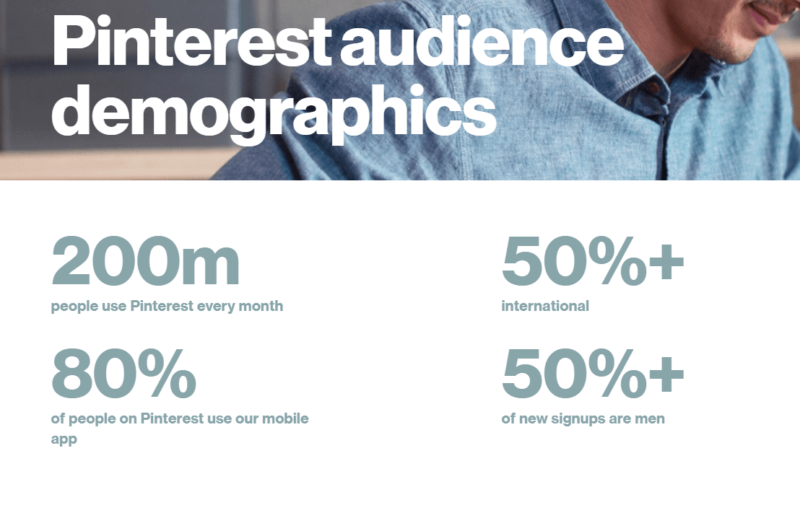
Amidst all of that, what is really impressive is the sheer volume of content and traffic circulating through Pinterest and how bloggers have harnessed this as a content marketing tool. Here’s a case study to help drive home that point.
Case study: Pinterest in action
I am a big fan of Pinterest now, but initially, I was skeptical. I’m nothing if not a data nerd so, I decided to jump in and take a closer look at Pinterest for a case study, since I kept hearing all these great things about it.
In November of 2016, I published a piece of content for a travel-related site and circulated it on Pinterest through the travel site’s Pinterest account. The traffic and engagement results were impressive! The single blog post got 5,000+ impressions, 3,000+ repins and drove 1,500+ visitors to the website in three months’ time.

This website stopped publishing content and running marketing campaigns in February 2017. Even without further Pinterest marketing, this site continued to receive 600+ users last month (April 2018, surpassing organic traffic) from Pinterest alone, and the account itself gets 3,900+ impressions per day.
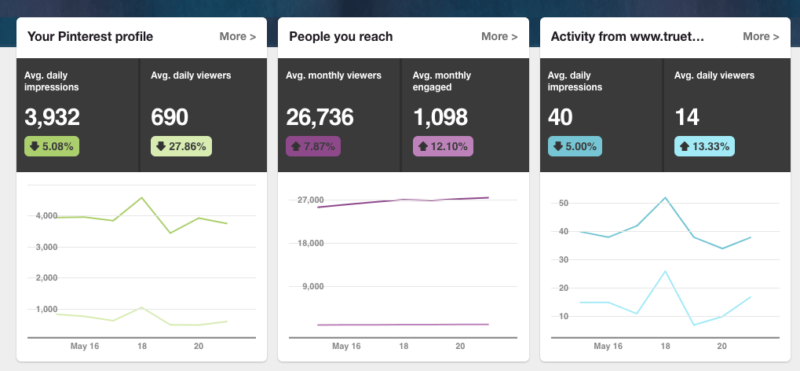
This case study is far from the most impressive of examples, while the success of blog post circulation is typically measured in visits to the website, brands can get the added benefit of brand awareness through visual circulation.
Those 5,000+ impressions could very well translate into customers being driven directly to the source, even without a link.
My case study told me even a novice can see real results from Pinterest marketing.
Why haven’t more SEOs and content marketers jumped on the Pinterest wagon?
Good question. Pinterest may be lagging due to a perception that it is for mommy bloggers, arts-and-crafters and people who want to DIY their wedding. If you wander over to Pinterest.com, you’ll see that the majority of the content falls into those categories.
But I think Pinterest is more than that. I believe it’s a search engine.

Although the front page may be full of Mason jars, fall outfits and pictures of kittens, what’s behind the front page and the search box is a different story.
Pinterest displays a broad range of industries and is a source of content for people looking for anything from auto parts to zebra-print rugs. This product diversity attracts all kinds of folks and satisfies queries for a wide range of topics, products and niches.
As a marketing platform, Pinterest doesn’t come naturally to marketers. They are familiar with Facebook, Twitter, and even LinkedIn for content circulation, but Pinterest is uncharted territory. Which is even more reason to get the jump on this strategy before it really takes off in the content marketing space.

How to use Pinterest as a high-volume traffic tool
The “secret” of Pinterest marketing isn’t really a secret at all, as the numbers speak for themselves. The real secret behind it is that bloggers have long been using Pinterest as a source of traffic, while it has been all but ignored by SEOs and content marketers.
If you are serious about driving relatively passive, inexpensive traffic to your sites or your clients’ sites, then this guide is for you.
We’ll dive deep into my content strategy for Pinterest success, and also how to make the most of Pinterest marketing to drive high-volume traffic on autopilot (even long after the campaign has ended).
1. Know if your niche is a good fit for Pinterest
How do you know if your website is a good fit for Pinterest marketing? Look at what’s already there.
Though Pinterest doesn’t have the data to show search volume, you can do a bit of keyword research on your own.
First, go to the Explore feature to see the most popular categories on Pinterest. If your business falls into one of these categories, it’s a safe bet that people are looking for content around that topic.

Second, type your topic into the search box and see what content is displayed. If it is in line with the content you plan to put out, this is further confirmation that sites in your niche are circulating content on Pinterest.
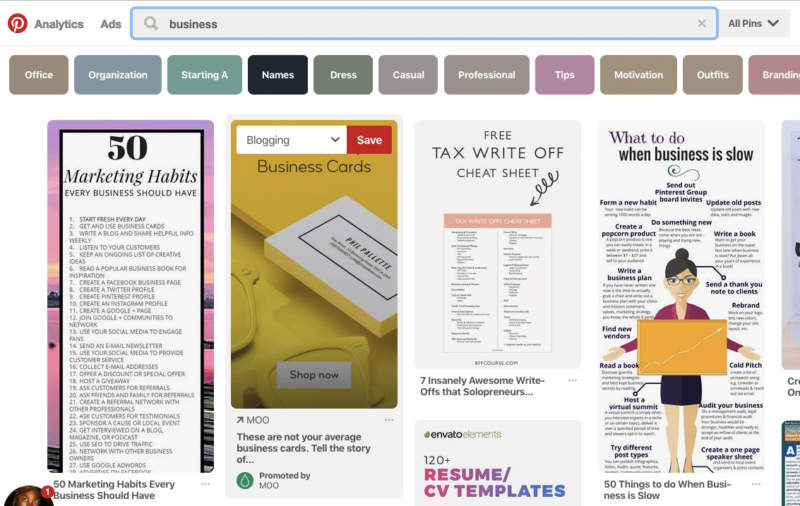
Finally, you will also see topic suggestions underneath the search box. These are listed in descending order so the terms on the left are the most popular topics. These terms will aid your Pinterest SEO strategy.
If all three of these steps bring up a high volume of content related to your niche, you can move forward confidently. knowing your site is in line with what users are searching for.
The key is just to get YOUR content in front of the eyes of Pinterest users before your competitors do the same.
2. Write great content & optimize for Pinterest
As with any content marketing strategy, the success of your campaign depends on the content itself.
Before you jump into Pinterest marketing, be sure that your content is engaging and set up for SEO success.
In particular, your post or page titles and meta descriptions should be SEO-friendly and eye-catching. These elements will be pulled into your Pins, so having them optimized will increase circulation and click-through rate (CTR).

After the Pin graphic, the title and description are what users will see to determine whether they are interested in your content or not — so it must be in line with what they are searching for and match what the Pin is about. Understand what really matters in SEO content so that you can set your Pins up for success.
3. Create a business Pinterest account
The next step is to create a business Pinterest account for the website you are running the campaign for. This will allow you to access analytics on your account.
Having one account per website is preferred, rather than circulating content for several clients through your own Pinterest account. Pinterest has its own algorithm as well, and circulating content from a variety of niches will dilute your strategy and result in less engagement overall.
Be sure to include a link to your website, your location (if applicable), and add an attractive profile image and cover photo to your profile while you’re at it.
4. Enable ‘Rich Pins’
You will then enable Rich Pins for your website. This is what allows Pinterest to pull in your optimized titles and meta descriptions. Setting this up is relatively easy, and Pinterest also allows for different Pin formats depending on your niche. This step is essential!
5. Optimize your Pinterest profile for SEO
Optimizing your Pinterest account is perhaps the most involved part of this process, so let’s break it down into a few simple steps here.
First, go back to the keyword research you did in step 1. Note the most popular categories and topics for your niche, and you may also want to look at competitor Pinterest accounts to see what keywords they are targeting.
If you are skilled in keyword research, those same principles apply here as well.
If you are new to keyword research, I recommend subscribing to a keyword tool such as SEMRush or Ahrefs to get started.
Second, incorporate these keywords into your profile name and description. Make it readable, and avoid keyword stuffing, just as you would with other social media profiles. (It is best to avoid an account name that is very clearly a brand or marketing account.) Rather than naming your account “Best SEO Business, Seattle,” you may want to name it “Blog Boss | Blogging Tips & SEO Hacks.”
This will have a wider appeal while being SEO-friendly.

Third, create boards related to your niche. For example, create a “best of” board for your content and then at least 10 other boards for repinning content (I’ll talk more about this later).
Each board should be named according to the topics you aim to cover.
For example, if your account is going to share content about digital marketing, you may have boards for “social media tips,” “graphic design ideas” and “marketing hacks.”
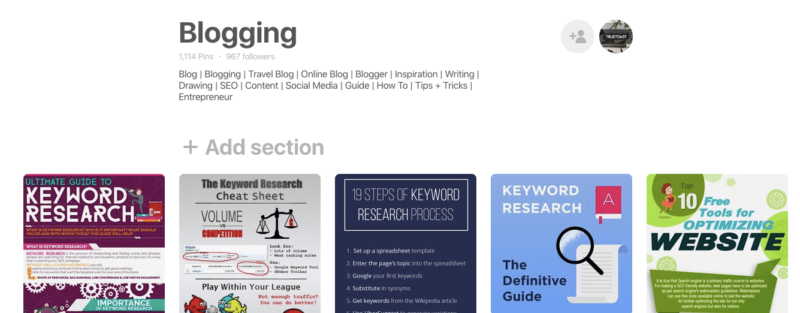
Include keywords for each topic in the title and description of each board (It is OK to add a couple of keywords to the description in this case).
Add 20 or so topic-related Pins to each board (ignoring your “best of” board for now) to fill your boards. This helps Pinterest’s algorithm see what kind of content you are interested in and will be sharing over time.
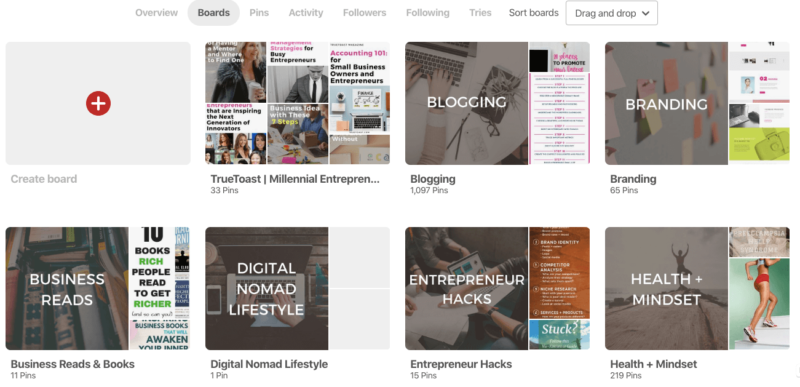
Finally, it is recommended that you set cover images for each board, similar to the way I did it on the account above. This makes your account more appealing and easier for users to determine what your content is about.
It is likely that your Pinterest SEO strategy will evolve over time as you receive more data on the success of your Pins. Rework your profile to match the queries of your target audience.
6. Create a Tailwind account
Ready to drive traffic to your site on autopilot? Tailwind is the key to making all of this a reality!
Note that I am NOT an affiliate or associated with this app in any way, but I am a huge fan because this is what brings this strategy all together!
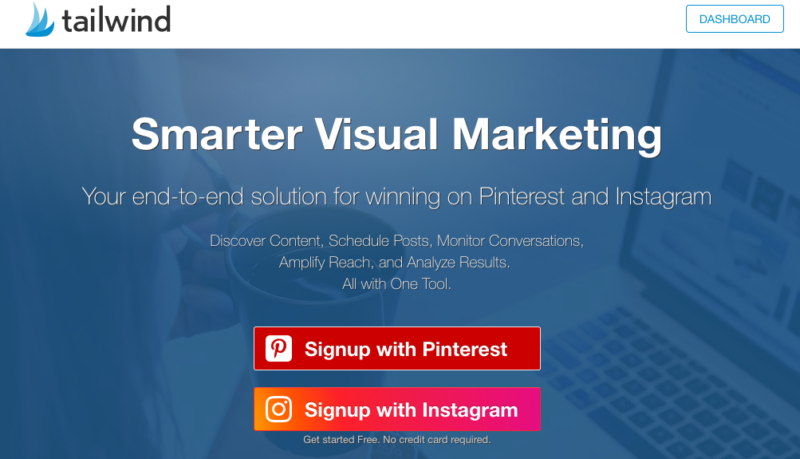
Much like Hootsuite or Buffer, Tailwind allows you to schedule your content (ie Pins) to different boards. Unlike other apps though, it is partnered exclusively with Pinterest, so that the two work together seamlessly.
The most amazing part of this app is that it can run continuously AND optimize posting times for you. It is also where you will find “Tailwind Tribes” to share your content to groups for wider reach.
7. Design attention-grabbing Pin graphics
The graphics you create for your Pins are some of the most, if not the most, important factors when it comes to people actually repinning your content. You simply won’t get the level of engagement you want if your Pin graphics do not entice users.
Even if you fall into a “boring” niche, there are plenty of things you can do to make your graphics interesting.
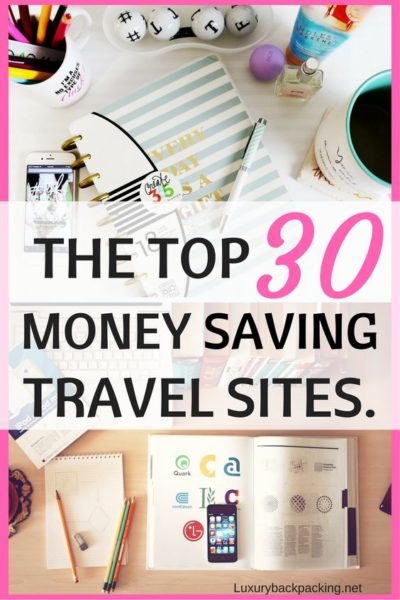
For example, if your post is “The Top 30 Money Saving Travel Sites,” a good graphic could be an interesting stock photo and bright text overlay. You may even want to add your site logo and uniform resource locator (URL) at the bottom for branding.
Guidelines for Pinterest graphics
Here are some basic guidelines to help you create graphics for your content:
- Make graphics long and vertical, preferably 735 x 1102 px.
- Make graphics bright and eye-catching.
- Include the title of your post or page in the graphic.
- Keep branding/colors consistent.
- Avoid too-obvious branding, like large logos or company name.
- Create two or more graphics per Pin to allow for testing.
For DIYers, I recommend using Canva.com to create your graphics. It has Pin templates you can use. If you are doing this for a client, I strongly suggest hiring a graphic designer to make eye-catching and professional-looking graphics.
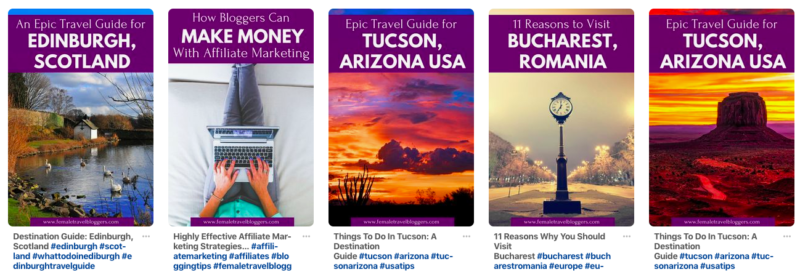
Oftentimes, designers will make two or three templates for you to use and edit each time you publish a new Pin. Just swap in a new image and title and you are good to go!
Note that having multiple graphics per Pin allows you to test the effectiveness of Pins over time. You will see which graphics are performing best (in your Pinterest Analytics dashboard) and can revise your templates accordingly.
Once you have created graphics for your Pins, you can add them to your content as the featured image or within the content itself. The important thing is that, once shared, the Pin comes up with your newly created graphics.
8. Join group boards and Tailwind Tribes
By joining group boards on Pinterest and Tailwind Tribes within the app, you are expanding your reach to other accounts in your niche.
Similar to Instagram’s algorithm for showing content to users that are related to accounts they follow, group boards encourage other accounts to share your content with their audiences and the accounts that follow them.
In fact, the number of followers your account has matters far less than how many eyes you get your content in front of on a regular basis through group sharing.
There are many resources online that outline how to identify and join group boards, but my preferred site is PinGroupie or within Pinterest itself.
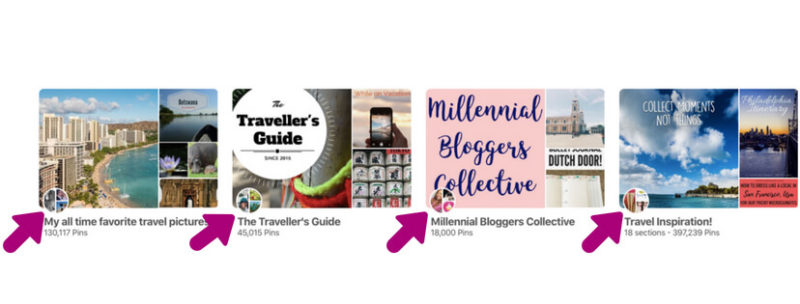
To find group boards on Pinterest, you will have to do some digging by looking at the boards of other accounts in your niche. If the board has multiple users associated with the board, this is likely a group board. To join, click on the board description and follow their specific instructions for joining.
You will be sharing your own content here and repinning the content of other accounts in your niche.
Joining Tailwind Tribes is a similar process; you can use the “Find a Tribe” feature to find them. You will want to find groups that appear active — that is, they are pinning and repinning daily.

Once you find a Tribe, take note of their guidelines for posting, as some of them may ask you repin a certain number of Pins per day, for example. The fewer restrictions and requirements, the better.
These group boards will come into play once you start scheduling your Pins via Tailwind.
9. Schedule your Pins (content)
Once your post or page is published, it is time to schedule it via your Tailwind app. You can do this either via Tailwinds Chrome extension or within the desktop app itself.
Tailwind will give you the option to select what boards you want to schedule your content to and when. You can add time slots, schedule multiple Pins at once and schedule Pins from other accounts.
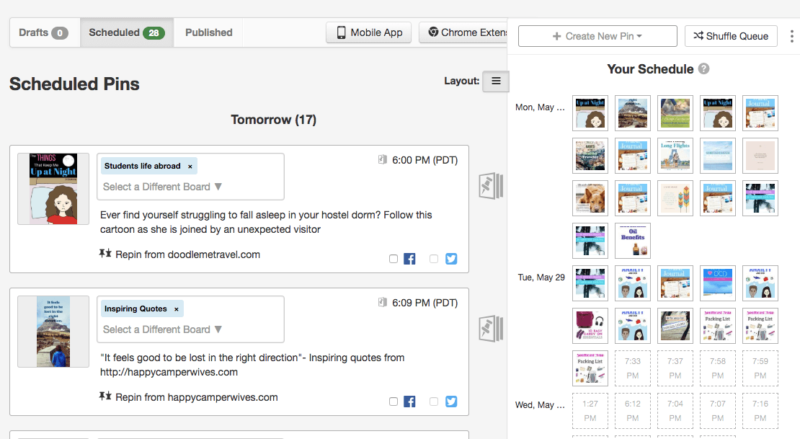
You will want to pin your own content first to your “Best of” board, then to every board that is related to that topic, including the group boards you are in.
As a general rule, 80 percent of the content you pin should be from other accounts, and 20 percent should be your own content. I recommend scheduling at least 30 Pins for each day.
The Tailwind app will circulate your content according to the schedule you set but will also offer suggestions for optimal sharing times. The goal is to be continuously pinning your content to have it appear in front of as many users as possible
10. Keep track of your analytics
Your Pinterest Analytics dashboard will tell you how many impressions your Pins are getting, how many saves, repins, clicks, and more. Knowing the impressions data will help you see what content is performing well and will inform on your future content strategy.

If you have Google Analytics enabled on your site, you will also be able to see how much traffic the source “Pinterest” is sending to your site. This will confirm the success of your campaign.
Beyond the data, it is always beneficial to look at what your competitors are doing on Pinterest. If you see that certain kinds of content are getting a lot of repins and comments, that’s a good indication that you may want to create content that is similar. You may also get insight into their keyword strategy and what style of graphics they are using.
Summary
Pinterest is one of the most robust and affordable content marketing tools out there, though it has been all but ignored by SEOs and digital marketers alike. Bloggers have been using Pinterest for years to drive high-volume traffic to their websites and know with the help of apps like Tailwind, a content strategy can almost run on autopilot.
The key to implementing this strategy successfully is being consistent. Schedule your content regularly, stay on top of the data, and continue putting out high-quality content. Before long, I have no doubt that Pinterest will become one of your favorite content circulation tools for you and your clients.
Contributing authors are invited to create content for MarTech and are chosen for their expertise and contribution to the search community. Our contributors work under the oversight of the editorial staff and contributions are checked for quality and relevance to our readers. MarTech is owned by Semrush. Contributor was not asked to make any direct or indirect mentions of Semrush. The opinions they express are their own.
Related stories